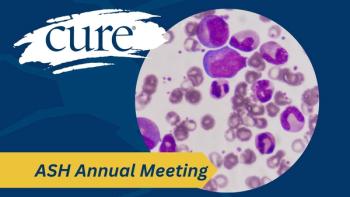
Upfront Chemotherapy Improves Survival in Bladder Cancer Subtype
When given neoadjuvant chemotherapy before getting a radical cystectomy, patients with the basal subtype of muscle-invasive bladder cancer (MIBC) saw significantly improved overall survival (OS) compared to those who had a cystectomy alone, according to a recent study.
When given neoadjuvant chemotherapy before getting a radical cystectomy, patients with the basal subtype of muscle-invasive bladder cancer (MIBC) saw significantly improved overall survival (OS) compared to those who had a cystectomy alone, according to a recent study.
In the study, OS was dramatically improved with neoadjuvant chemotherapy for patients with basal tumors, regardless of whether they had high-risk or low-risk MIBC. In a multivariate analysis correcting for age, male gender and stage, there was an 86.5 percent reduction in the risk of death with the addition of neoadjuvant chemotherapy compared with cystectomy alone for patients with the basal subtype. There was no survival advantage when looking at the luminal or p53-like subtypes with neoadjuvant chemotherapy.
“There was a significant survival advantage noted in basal tumors that received neoadjuvant chemotherapy. This held true in a multivariate analysis that was statistically significant,” Jonathan Duplisea, M.D., a urology fellow at the University of Texas MD Anderson Cancer Center, said during a presentation of the results. “In this particular cohort of patients, survival of low-risk patients is improved by neoadjuvant chemotherapy. This benefit appears to be confined to basal tumors.”
Neoadjuvant chemotherapy is known to play a role in the treatment of MIBC prior to cystectomy; however, widespread adoption of this treatment strategy has not occurred, with some papers finding that around 20 percent of patients end up getting neoadjuvant chemotherapy. Commonly cited reasons for this lack of adoption are concerns about the toxicity and not wanting to delay surgery.
The trial included 165 patients with MIBC who were treated with radical cystectomy with or without neoadjuvant chemotherapy at MD Anderson or the University of British Columbia. Patients were classified as high or low clinical risk, based on hydroureteronephrosis, clinical T3a to T4b disease, histologic evidence of lymphovascular invasion (LVI) and micropapillary or neuroendocrine features at the time of transurethral resection. Whole genome analysis was performed on transurethral resection specimens classifying them as luminal, basal, or p53-like.
Patients were a median age of 65 years (range, 35-89), with 68 percent classified as high risk and 32 percent as low risk. In terms of disease state and clinical features, 27 percent had T3b disease, LVI was identified in 21 percent of patients, hydroureteronephrosis in 29 percent and 16 percent had variant histology. There was relatively even distribution of the subtypes, with 30 percent basal, 39 percent p53-like and 31 percent luminal.
“Importantly, there were no differences in the subtypes with respect to age, sex and stage,” Duplisea noted.
Across all enrolled patients, there was a distinct OS advantaged in patients with clinically high-risk disease with neoadjuvant chemotherapy compared with radical cystectomy alone, with a 49 percent reduction in the risk of death in the neoadjuvant arm after more than 200 months of follow-up. Additionally, an improvement in OS was also seen with neoadjuvant chemotherapy in the low-risk population.
Looking at subtype and clinical risk stratification, in the high-risk patients with basal tumors, there was a distinct survival advantage, Duplisea noted. With nearly 300 months of follow-up, 25 percent of patients in the neoadjuvant chemotherapy arm remained alive versus none in the surgery-alone group. In the low-risk, basal population, 100 percent of patients who received neoadjuvant chemotherapy remained alive compared with approximately 20 percent of those who did not receive neoadjuvant therapy.
“If we did not know the subtypes of these patients, they would have been classified as low-risk, and not received chemotherapy using our risk-stratified approach,” Duplisea said. “Despite the small number that we had, once we dissected everything down in terms of risk stratification and subtype, we believe that the definition of high-risk should be emended to include the basal subtype,” he concluded.





